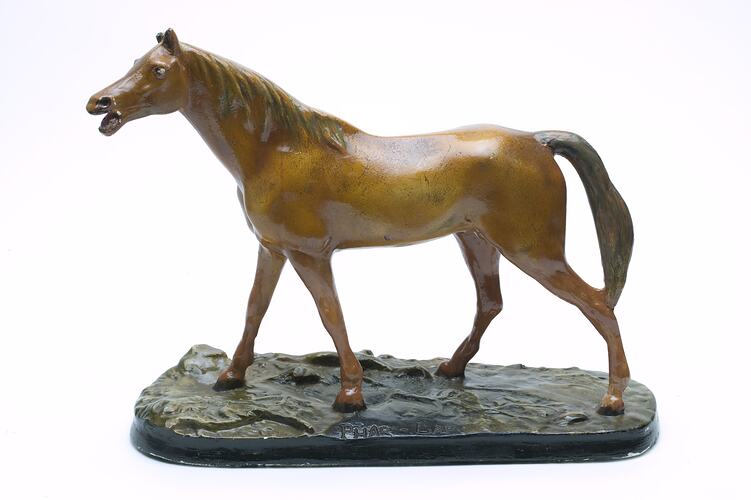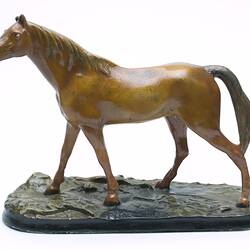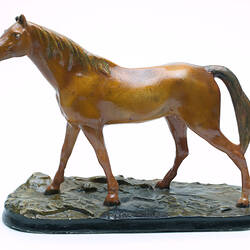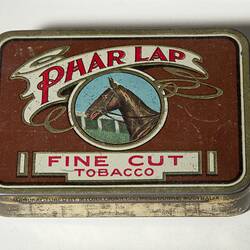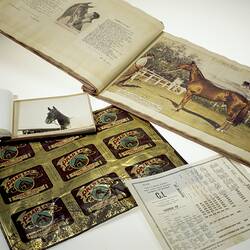Summary
The plaster figure of Phar Lap was produced in Australia during the early 1930s to capitalise on the growing popularity of Phar Lap. It is believed that they were produced by an Italian migrant, and sold door-to-door in Melbourne's northern suburbs.
Physical Description
Plaster moulded figure of a galloping horse, handpainted in brown, with a black base.
Significance
The plaster figure is a rare surviving example of a style of ornament popular during the 1920s and 1930s. Cheaper to produce than similar porcelain figures, they were therefore more affordable to households reeling from the effects of the Great Depression. It's not surprising that an entrepreneurial (probably local) manufacturer would produce a figure of arguably the most popular celebrity of the time. It's generic horse features suggests that a previous horse mould may have been recycled, with a chestnut paint colour and the name `Phar Lap' added to tie it to Australia's favourite racehorse.
More Information
-
Collection Names
-
Collecting Areas
-
Acquisition Information
Purchase
-
Inscriptions
Incised into base: PHAR-LAP.
-
Classification
-
Category
-
Discipline
-
Type of item
-
Object Dimensions
380 mm (Width), 70 mm (Depth), 210 mm (Height)
-
Keywords
Horse Racing, Horses, Ornaments, Racing Industry, Sport, Statuettes, Making History - Phar Lap
